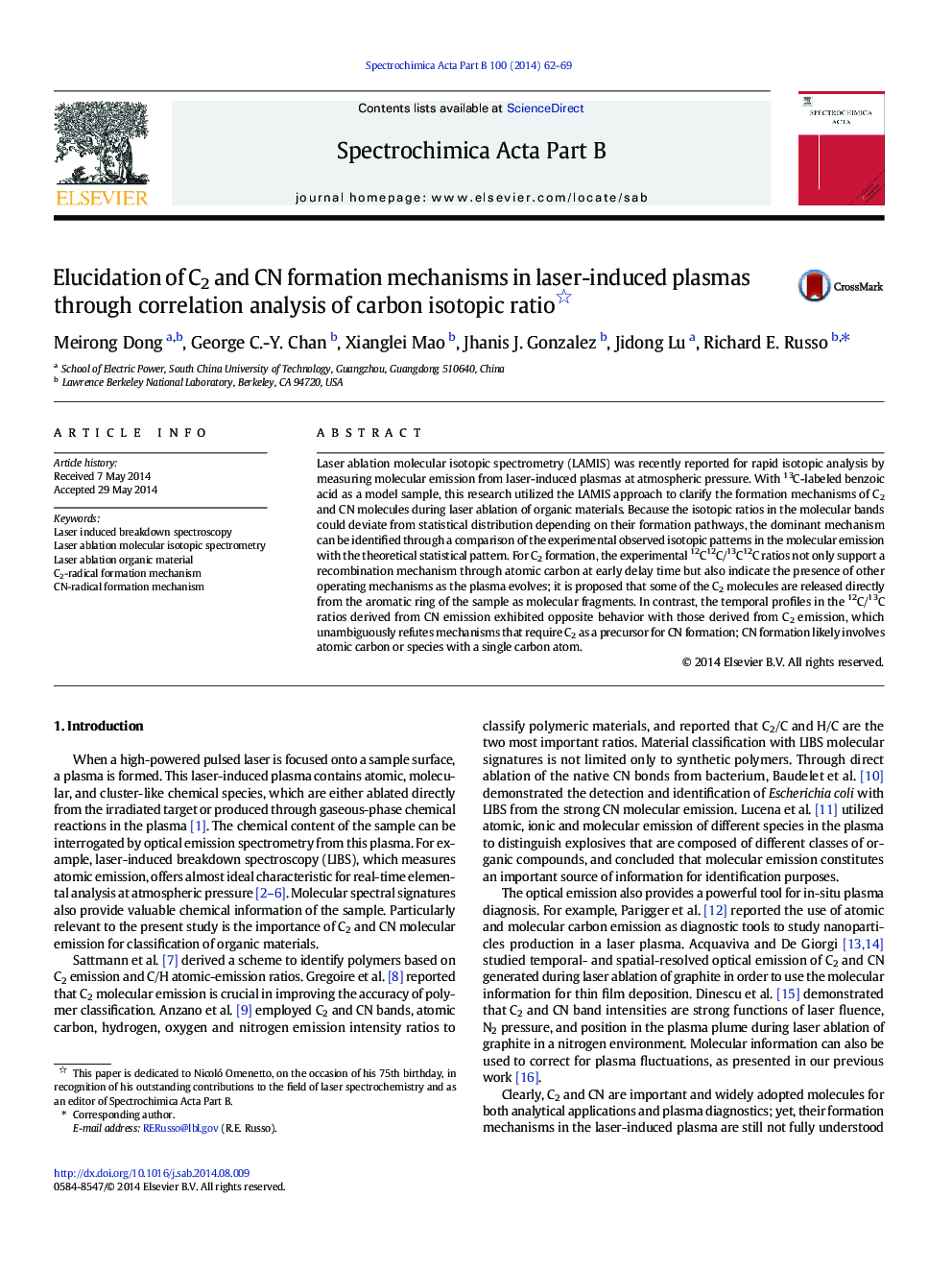| Article ID | Journal | Published Year | Pages | File Type |
|---|---|---|---|---|
| 1240223 | Spectrochimica Acta Part B: Atomic Spectroscopy | 2014 | 8 Pages |
•C2 and CN formation mechanisms during laser ablation of organic material studied•Some C2 molecules are directly desorbed from the organic compound.•C2 molecules are not important precursor for CN-radical formation.
Laser ablation molecular isotopic spectrometry (LAMIS) was recently reported for rapid isotopic analysis by measuring molecular emission from laser-induced plasmas at atmospheric pressure. With 13C-labeled benzoic acid as a model sample, this research utilized the LAMIS approach to clarify the formation mechanisms of C2 and CN molecules during laser ablation of organic materials. Because the isotopic ratios in the molecular bands could deviate from statistical distribution depending on their formation pathways, the dominant mechanism can be identified through a comparison of the experimental observed isotopic patterns in the molecular emission with the theoretical statistical pattern. For C2 formation, the experimental 12C12C/13C12C ratios not only support a recombination mechanism through atomic carbon at early delay time but also indicate the presence of other operating mechanisms as the plasma evolves; it is proposed that some of the C2 molecules are released directly from the aromatic ring of the sample as molecular fragments. In contrast, the temporal profiles in the 12C/13C ratios derived from CN emission exhibited opposite behavior with those derived from C2 emission, which unambiguously refutes mechanisms that require C2 as a precursor for CN formation; CN formation likely involves atomic carbon or species with a single carbon atom.
